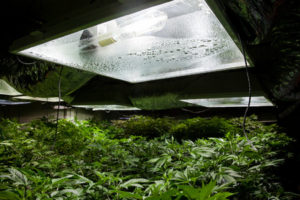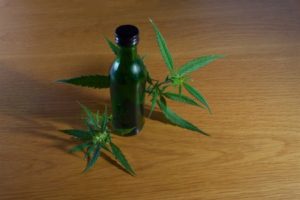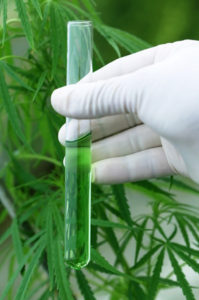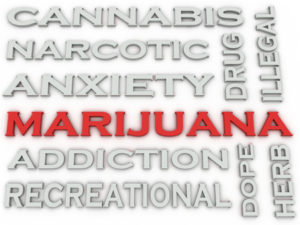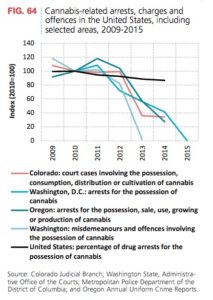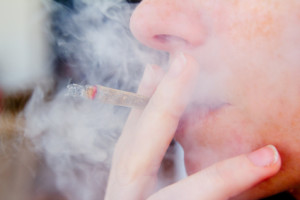Trouble in Plumas County

Situated in the Sierra Nevada region of California, Plumas County is an attractive recreational destination for a wide variety of activities, including boating, camping, fishing, hiking, skiing, hunting and others. The Explore Plumas County webpage says it is “a Wilderness of Wonders,” where the wilderness is untouched. “Natural beauty is etched in the snow-capped peaks and towering pines.” It is said to be a four-season travel destination with fresh mountain air and pristine, blue waters. You are encouraged to explore the mountain ranges and wilderness, where there is “something new to discover with each experience”—including illegal marijuana growers.
I’m not a resident of Plumas County. But as I was completing another article (“Pot Market Getting a ‘Black’ Eye”) on the problems with how the expanding recreational marijuana has helped the black market for marijuana to flourish instead of weakening it, I ran across the current debate over marijuana in Plumas County. Looking closer at the issues in this small, rural county helps to illustrate some of the problems that come with the political and cultural pressures to legalize marijuana.
The photos on the Explore Plumas County webpage are seductively beautiful. I want to go visit; maybe for a very long time. The county is in the northern end of the Sierra Nevada range. The entire county population is only 20,007, as of the 2010 census. But Plumas County is in the midst of a political and culture war over whether or not there should be a greater presence of marijuana in the county. Cannabusiness Law noted currently there is a ban on the retail sales of marijuana as well as manufacturing. Current zoning codes do not permit commercial marijuana growing, but the codes are under review. The webpage also provides you with information to contact local officials and let them know you oppose the bans … or approve them, I’d add.
On November 8, 2016, California voters approved Proposition 64, the Adult Use of Marijuana Act (AUMA). Beginning in 2018, it allows “the sale of marijuana for adult use in licensed stores under regulations to be established by the state Dept. of Marijuana Control (DMC) in conjunction with local governments.” The possession and use of up to one ounce of marijuana (or 8 grams of concentrates) and personal use cultivation of up to six plants is also legal. It also reduces fines for most illegal cultivation, sale, transport and possession for sale offenses from felonies to misdemeanors—with possible exceptions for violent or repeat offenders. See the California NORML website for the following quote and more information on Proposition 64 and other California marijuana laws.
Commercial sale, cultivation, and production of marijuana are allowed only by licensed providers. Illegal sale, transport, manufacture, cultivation, or possession with intent to sell are generally punishable as misdemeanors, with felony enhancement allowed for special circumstances and three-time offenders. Minors under 18 are in no case subject to imprisonment, but may be punished by drug education and community service.
Medical marijuana has been legal in California since 1996 with Proposition 215, the Compassionate Use Act. And it is because of the fallout from that change that many of the current problems in Plumas County have occurred. The Los Angeles Times reported that four weeks before the 1996 general election where Proposition 215 was approved, Senator Diane Feinstein said “you’ll be able to drive a truckload of marijuana through the holes in it.” The devil is in the details, and she said this particular bill lacked details. Nevertheless, the assessment of the author of the LA Times article was it had been an incredible success, despite its vague wording and instances of abuse. Read on before you accept that statement.
After the approval of Proposition 215, the cultivation of marijuana took off in the so-called Emerald Triangle, consisting of the counties of Mendocino, Humboldt and Trinity, along the northern coast of California. Plumas County is on the opposite, eastern side of the state, at the same latitude as the Emerald Triangle counties. The Emerald Triangle has been estimated to produce 60% of America’s marijuana. As was noted above, Plumas County previously banned the retail sales and manufacturing of marijuana, and had zoning restrictions for the cultivation of marijuana. Nevertheless there have been serious problems with illegal activities involving marijuana within the county.
In July of 2015, Plumas County authorities reported that along with Forest Service law enforcement, they recovered about 23,000 marijuana plants at two separate locations. The estimated value of the plants was in excess of $10 million. Officers from Plumas County SWAT, the Forest Service and California Fish and Wildlife took part in the eradication raids. Two suspects were encountered near one site, but they avoided capture in the brushy steep terrain. Residents were encouraged to contact authorities if they saw any signs of marijuana gardens, such as drip lines, gardening tools, bags of fertilizer or pesticides, trash piles or remote campsites.
In August of 2016, John Bartell reported for KXTV how the Plumas National Forest was plagued with illegal grows. Reportedly, teams were finding illegal grows on a weekly basis. One local cattle rancher said he lived next to an illegal marijuana grow. “They had pit bulls running free and they attacked 2 cows and bit their ears off.” A Plumas County detective said they regularly encounter a number of individuals who are not residents of the United States cultivating the gardens. Often they turn out to be Mexican nationals. “Some are out here for 3 or 4 months and are promised $10,000 or $20,000 to grow.” There have been instances of hunters wandering into fields where they were killed. Safety in the Plumas National Forest is now a serious concern.
This is not simply an isolated problem for Plumas County. In Yosemite National Park, park rangers are regularly discovering and destroying large marijuana growing operations, attributed to the same Mexican cartels. Here is a video report on this problem from the Travel Channel. A park ranger is quoted as saying the park has had several marijuana growing plantations located within its borders. Some of these growing plantations have been worth as much as $14 million. “These are not simply a few people that want to have a garden and grow something for their use.”
There is a “Plumas People Opposed to Commercial Cannabis” Facebook page with multiple articles describing issues from the illegal marijuana grows. Banned pesticides are showing up in California water. A Reuters article, appearing on US News & World Report, noted toxic chemicals from illegal marijuana farms are found in California’s rivers and streams feeding the state’s water supply. The chemicals have turned thousands of acres into toxic waste dumps. Law enforcement officers who have inadvertently touched plants and equipment have been hospitalized. ”Scores of animals have died.”
A New York Times article noted that despite the promise of a legal market, many growers are not signing up. Hezekiah Allen, the executive director of the California Growers Association, estimated only about 11% of growers in the Emerald Triangle have applied for grow permits. The paperwork to obtain a permit, the fees and the taxes are given as reasons for not doing so. Lori Ajax, the chief of California’s Bureau of Cannabis Control said there are folks who have been operating for a long time with minimal local oversight or no oversight at all. She thought it was going to take some strong enforcement to bring people into the regulated market.
California, which by one estimate produces seven times more marijuana than it consumes, will probably continue to be a major exporter — illegally — to other states. In part, that is because of the huge incentive to stay in the black market: marijuana on the East Coast sells for several times more than in California.
The drastically reduced legal consequences in Proposition 64 for most of the illegal offenses related to the cultivation, sale, transport and possession of illegal marijuana from felonies to misdemeanors, at least for the first couple of offenses, means there is very little motivation for illegal growers to enter the legal market. The Mendocino County district attorney said people living in the urban centers of California, like San Francisco, Los Angeles, and San Diego don’t realize the crime rate in the rural areas where marijuana is being grown.
Among the cases he is handling are a robbery and slashing death of a grower; the murder of a man at a marijuana farm by a co-worker wielding a baseball bat; an armed heist in a remote area by men who posed as law enforcement officers; and a robbery by two men and a juvenile who were invited to a barbecue and then drew guns on their hosts and fled with nine pounds of marijuana.
There was a meeting of the Plumas County Cannabis Working Group on the afternoon of Thursday, September 7th, 2017. The Facebook page for the Plumas People Opposed to Commercial Cannabis Facebook page related some of the concerns expressed by residents. One concerned resident noted how the drafted ordinance document was written by a pro commercial growing committee, “whose members stand to make large amount of money.” She also raised the issue of the potential environmental impact of water, pesticides and drainage into their creeks and rivers. Another person during the meeting raised a concern that approving commercial grow operations would lead to less county and/or state support to address the anticipated increase in local crime. A pro grower responded by saying high fences, guard dogs and private security forces would keep criminals in check. The concerned individual responded: “Yes, that’s JUST what we want here.”
In an open letter to the Plumas County Supervisors, another Plumas county resident noted how some individuals said the best way to improve Plumas County was to bring in the anticipated influx of cash from approving commercial growing. “They urge us to look for the money, trust them for a higher standard of character and compliance than has been reported elsewhere, and trust the free market.” But that isn’t happening in other areas. See “Pot Market Getting a ‘Black’ Eye.”
Another resident also voiced her concerns that every member of the Cannabis Work Group was someone in favor of commercial cultivation. The Work Group was “not a balanced representation.” She noted where the issue of odor was minimized. See the above linked New York Times article for a report that a police reconnaissance helicopter could smell pungent marijuana plants from 800 feet above an illegal grow. Concerns over an increase in crime, homelessness and changes in the community culture have been largely unanswered, she said.

People move to or visit Plumas County for the natural beauty, rural lifestyle, recreational opportunities, the mountain air, the open vistas, to raise families, to escape the culture and crime of the city. All of these would be changed in some degree by widespread cannabis cultivation. High fences would predominate, along with heavily secured tall hoophouses. The oft-referenced Mexican Cartels are unlikely to simply pack their suitcases and go home; what will they do here instead? Who will buy up properties and small farms and lease acreage for this lucrative crop? What large commercial interests may impact land use, local politics, ecological concerns, the small town culture? How does greed divorced from responsible citizenship change a community?
The decision on commercial marijuana growing in Plumas County isn’t finalized yet. The next scheduled meeting of the Cannabis Working Group is Thursday September 14th, starting at 10 AM PDT. There are a number of issues it seems; these are only a few. Will the façade of an unbalanced work group be addressed? What about the impact on local crime and the environment? If this is supposed to bring money into the county, how will that work when already California produces multiple times the amount of cannabis that can be consumed in the state? And it will be illegal to send any cannabis grown in Plumas County out-of-state. Doesn’t that set the county residents up for an explosive increase in illegal grows if commercial marijuana growth is approved? That is what happened in Colorado, which was better prepared enforcement-wise for recreational marijuana than California seems to be.
I live in Allegheny County, Pennsylvania, in a township whose population in the 2010 census was over 8,000 more than the entire population of Plumas County. My home state approved the Pennsylvania Marijuana Act (for medical marijuana) on April of 2016. There aren’t any dispensaries open yet; the state has just begun to register practitioners. In June of 2017 twelve companies were awarded growing licenses, including one in western PA fronted by Jack Ham, a former linebacker for the Pittsburgh Steelers. Growing will only be done in warehouses.
The only types of medical cannabis allowed initially are pills, oils, gels, creams, ointments, tinctures, liquid, and non-whole plant forms for administration through vaporization. Given the issues noted above in Plumas County and other counties in California, I hope residents of my home state will work together, as the residents of Plumas County are currently doing, to prevent similar concerns from developing in Pennsylvania. Residents of other states that have started down the road to legalization, be forewarned and learn from the current trouble in Plumas County.
If you sympathize with those Plumas County residents opposed to commercial marijuana growth in their county, give them some encouragement on the “Plumas People Opposed to Commercial Cannabis” Facebook page.

